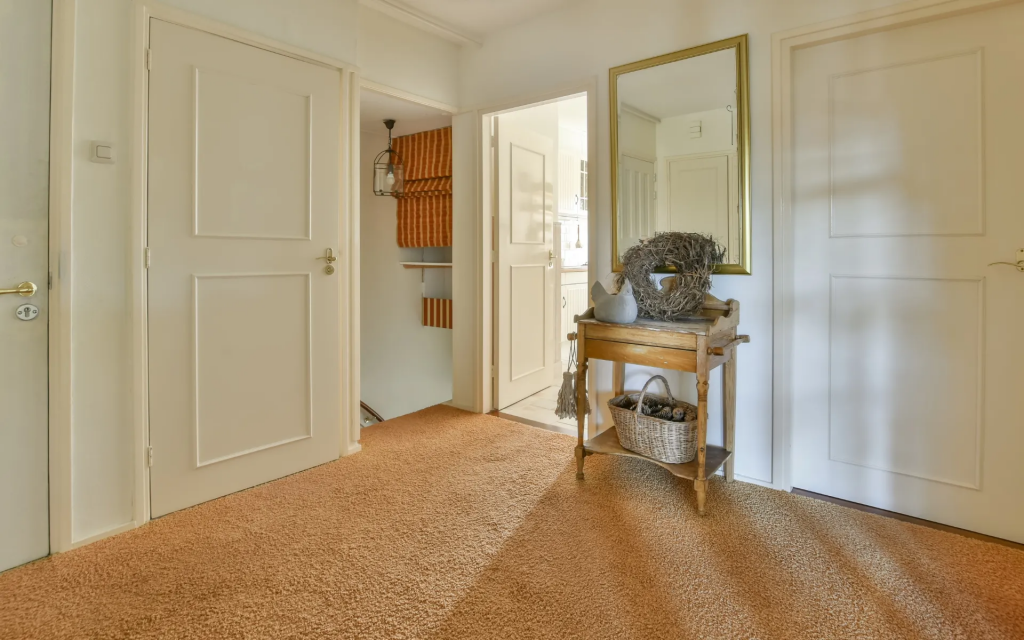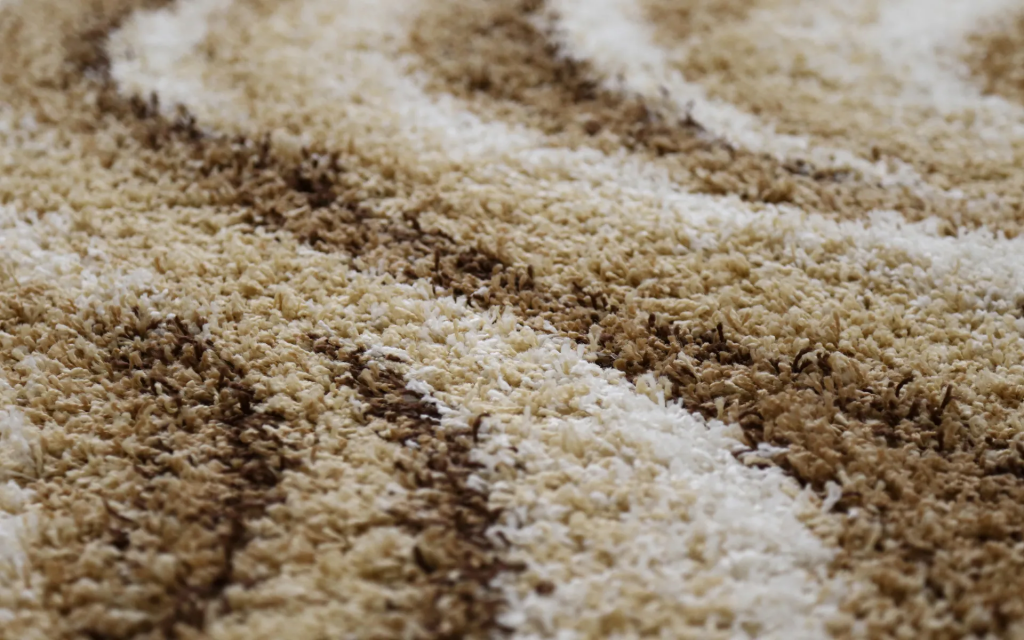One of the most vital factors to consider when choosing...
The Importance of Durability and Maintenance in Carpet Choices
- scvfloorsmith
- carpeting
- The Importance of Durability and Maintenance in Carpet Choices

When it comes to carpeting, flooring durability and carpet maintenance are key factors that shape your choices. Each fiber and pile type has unique maintenance needs that contribute to the carpet’s longevity. While cost is important, it’s crucial to consider the total cost of ownership, which includes the purchase price, lifespan, and maintenance costs. Let’s explore how these factors interact to help you choose the right carpet for your home or business.
Understanding Fiber Types and Their
Impact on Durability
Carpet fibers are the strands that create the upward-facing side of the carpet. The material impacts the look, feel, and carpet durability. However, keep in mind there are different grades of carpet, which means regardless of the fiber, you should also check the carpet durability rating to make sure the carpet is right for your intended purpose. The most popular fibers include:

Nylon
Soft and durable, nylon carpet is immensely popular, offering wear, stain, mold, and mildew-resistant fibers that retain color beautifully. As the longest-lasting carpet with a 12-to-15-year life expectancy, it’s the best fiber for carpet durability and ideal for pets. However, with its luxe look and rich color palette, it’s also the most expensive of the synthetics — perfect for homeowners seeking protective and long-lasting materials.

Olefin (Polypropylene)
Olefin isn’t quite as soft as nylon but wears well in high-traffic areas, making it more popular in commercial settings. However, it is gaining popularity among homeowners who want the look of wool without the hefty price tag. It is stain-resistant as long as the stain isn’t oil-based, as oil clings to the fibers, attracting dirt. Although affordable, olefin isn’t as long-lasting as nylon but could outlast polyester in the right circumstances. Choosing loop pile olefin creates a more durable carpet, offering great value with cleanliness and comfort.

Polyester
Polyester is fade-resistant, making it a popular choice for homeowners looking for rich colors. It’s affordable, hypoallergenic, and made from recycled plastic bottles. However, polyester tends to flatten under heavy foot traffic and is harder to clean in case of oil-based spills. Polyester lasts about five years in moderate-traffic areas but can last longer in low-traffic zones with proper carpet maintenance by a carpet cleaning expert.

Cotton
Cotton rugs are much more affordable than wool but offer far less value based on the total cost of ownership. Although they are machine washable and sustainable, they are not very durable. They work better as accent rugs or mats and aren’t likely to last beyond five years or so without diligent carpet maintenance.

Wool
If you have the budget for natural fibers, high-grade wool carpet is soft, stain-resistant, comfortable underfoot, and luxurious. It is also the most expensive. If you’re on a budget, a wool/acrylic blend is a good compromise. Pure wool is ideal for people with chemical sensitivities and allergies and is a durable carpet for stairs. Overall, wool carpets offer the best value as they are low maintenance, attractive, comfortable, and can last from 30 to 50 years with proper care — ideal for eco-friendly homes and hygienic living.
The Role of Pile and Construction in Carpet Longevity
Carpet pile refers to the size, length, and looping of the carpet fibers. Pile impacts comfort, carpet durability, carpet maintenance, and appearance. The most common pile options include:

Loop Pile
Loop pile is also known as uncut or Berber pile. It mimics the look of the traditional looped rugs of Morocco and North Africa with the yarn loop intact and visible as part of the carpet design. Berber carpet durability is exceptional while also offering stain resistance. It is easier to clean as there are fewer places for dirt and debris to get caught. It is suited to high-traffic areas because it doesn’t show indentations. Different textures are created by alternating the length of the loops, with level loops maintaining a consistent length and patterned loops using varied heights to add more texture and pattern. The downside is that they tend to be less soft than cut pile.

Cut Pile
Cut pile literally cuts or “shears” the loop off the fiber, revealing the individual fibers. Cut piles come in different lengths and thicknesses. High piles are more luxurious and comfortable, making it the best durable carpet for bedrooms and lower traffic areas, such as bedrooms, but are harder to keep clean. The longer fibers also make it easier to see indents caused by things like furniture, footprints, and vacuum runs. Low piles are ideal for higher-traffic areas and are preferred by allergy sufferers. They are also easier to clean. Cut piles are not as durable as loop piles, so they won’t maintain their look as long. However, cut piles with a heavy “twist” are more resistant to compression. While it’s harder to spot debris on cut pile carpets, they are harder to clean than loop pile.

Cut-Loop or Sculpted Pile
A cut loop is also known as a sculptured pile as it combines looped and cut-pile fibers to create distinctly sculptured textures or patterns such as geometrics. Although they tend to wear quite well, the complex texture traps dirt and crumbs in the crevices formed where the pile changes, making them more difficult to clean.
Maintenance Tips to Enhance Carpet
Longevity
Use these carpet maintenance tips to help optimize the look and life of your carpet:

Vacuum Weekly
Removing dirt and residue from your carpet reduces friction on the fibers. Vacuum once a week for lower traffic areas and twice for high-traffic or pet areas.

Have a Shoes-Off Policy
Removing shoes reduces the amount of dirt tracked into your home, improving carpet durability and overall cleanliness.

Rotate Furniture
Furniture compresses carpeting, which can lead to wear and tear. Consider rotating your furniture arrangement occasionally to reduce compression on any one given area.

Use Carpet Protectors
Anti-dent carpet protectors help distribute the weight of the furniture. They come in large disks or squares that help even weight distribution on legs or textured bottoms, which create a series of tiny indents as opposed to deep dents.

Clean Spills Right Away
Immediate spot cleaning prevents stains and helps maintain your carpet’s appearance and durability. This habit promotes hygiene and keeps your flooring looking fresh.

Professional Steam Cleaners
Steam cleaning every one to two years will restore your carpet’s original color and pile, extending its life and making your choice of carpet more worthwhile. Consider eco-friendly cleaning solutions, especially post COVID-19, for safe and healthy homes.

Choose the Right Pad
Carpet padding helps reduce wear and maintain a tight fit for your carpet. The right pad can improve comfort and overall carpet durability while protecting against moisture and ensuring floor stability.
What Is the Right Carpet to Choose for Your Home or Business?
Finding the right balance of aesthetic appeal, comfort, functionality, and easy care will give you the best value for your total investment. Considering the level of traffic, stain risk, your time for carpet maintenance, and your taste and budget will help you decide what is the right carpet to choose for your home or business — ensuring long-term protection, cleanliness, and durable flooring that fits your lifestyle.
Sources
Further Reading: Related Blog Post Topics
Eco-Friendly Carpet Installation • SCV Floorsmith • Palatine, Calabasas, and Nearby
Eco-Friendly Carpet If you’re looking for eco-friendly carpet installation or...
The Importance of Durability and Maintenance in Carpet Choices
When it comes to carpeting, flooring durability and carpet maintenance...



